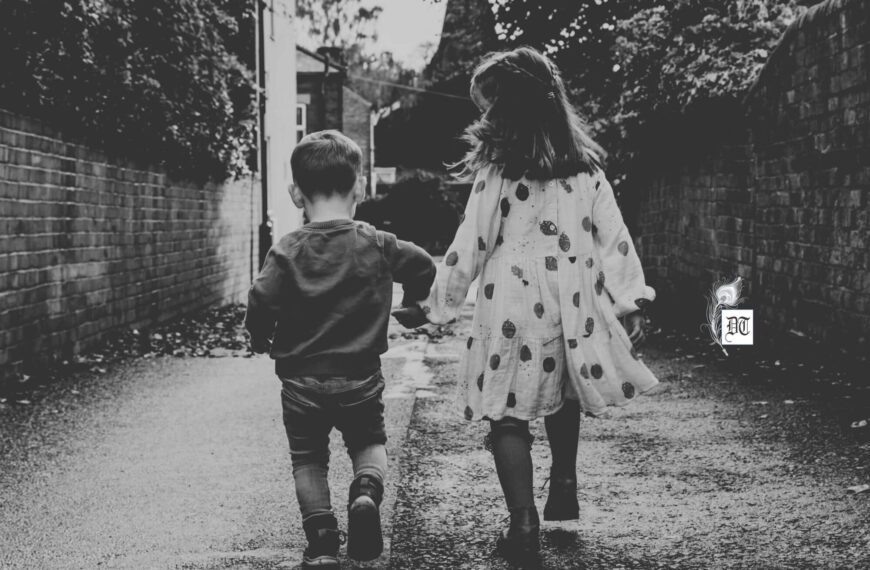Despite technological advances, we have little time for our children. The Blue Whale Challenge is a grim reminder. Tapati reminds us of the Indus Valley Civilisation, where archaeologists had unearthed a City of Toys. Even a generation or two back, children played lots of games and had plenty of companionship. She reminds us of the dangers that the next generations face, in the weekly column, exclusively in Different Truths.
We were watching an aquarium, a newly purchased showpiece at my friend’s place. The gold, red, black and blue fishes are swimming around creating moving rainbows inside the glass case. Looking the pair of blue fishes, one of my friends commented, “It reminds me of the Blue Whale Challenge (read game) taking so many lives.” This is a highly discussed issue in newspapers and TV, social gatherings and almost everywhere.
“But what is it all about?” Quite a few of us did not really have much detailed knowledge.
Dr. Sudha, one of our friends is a counsellor and an expert psychologist. She explained the whole game: “The Blue Whale Challenge is a dreadful online game, which involves a series of 50 bizarre tasks, including self-injury and eventually suicide at the end of day 50. This is shocking that this dangerous fad actually got a few takers among the youth and teenagers. It has already taken a few lives in India; almost every day we find similar news. The causality is more than 130 in Russia where the game originated. Quite a few children have been rescued just before completing the final task of jumping to death.”
“Oh, what a notorious game!”
“If you search online for Blue Whale, you will find innumerable depressing messages from teens desperate to play this game and end their miserable lives. For example: “Hello, I really want to end my life with a fun game, tired of life, tired of being ignored”; “ I am the fat friend, the ugly daughter, the dumb classmate, the depressed girl, the hated child”; “How do I start the Blue Whale Suicide Game?” etc.
These secret conversations are held in private groups and parents or teachers may not realise until the final stage is reached – the suicide. The children who agree to play allow the admin unknowingly to steal their personal data and blackmail or manipulate them into playing till the end. The challenges range from waking up at 4.20 am and watching horror movies, to cutting shapes on their skin with final challenge of jumping off a high-rise building. The players have to complete the task daily and share photos with the game operator’s proofs, failing which they receive threats. Once downloaded, the game cannot be deleted.
Actually, these kids typically suffer from low esteem, self-confidence, and insecurity.
“But this is a cruel concept. Who would want to drive young teenagers to suicide?” This question was quite normal because most of us have grown up with beautiful memories of various games, playing in the open, sometimes in parks or even courtyards. If someone had a heavy mind there were other people, friends, friendly neighbours or affectionate relatives to ask what transpired to make one sad. Otherwise, we always shared our sorrow, some scolding or difficulty in classrooms with our siblings or a few close friends. They tried some solace to bring a smile on our face.
 “Well, there are plenty who don’t think highly of themselves. Twenty-two-year-old Philipp Budeikin, the creator of the dreadful game has been quoted as saying in an interview that the game is designed to cleanse the society of ‘weak people’; he believed he is actually doing good to the society.”
“Well, there are plenty who don’t think highly of themselves. Twenty-two-year-old Philipp Budeikin, the creator of the dreadful game has been quoted as saying in an interview that the game is designed to cleanse the society of ‘weak people’; he believed he is actually doing good to the society.”
“But how one would come to know that his child is playing the game?”
“This challenge takes off in closed groups. One needs to watch out for the tell-tale sign in kids before it’s too late. The parents should be watchful of any cut marks or a carved 57 or 40 sign, or three mild slashes on the wrist or any whale shaped pattern anywhere on the body. One should be careful if the child wakes up at an unearthly hour to watch scary movies.”
“Who is to be blamed for this horrific situation?”
 “Obviously the parents; they do not give enough time to the kids, only pressurising for studying and good results and look for others praising their kids. Quite often, both are working, so kids are taken for granted.”
“Obviously the parents; they do not give enough time to the kids, only pressurising for studying and good results and look for others praising their kids. Quite often, both are working, so kids are taken for granted.”
Today, the social scenario has changed. We have gained some progress and lost some good old values. Siblings? Most of the modern children do not have. They are brought up as a single issue in a nuclear family, no uncle, aunt, cousin to share their pain. Life is so hectic for the parent and the child, they don’t even know who their next door neighbour is.
“In spite of their busy lives, the parents have to be available for the kids.”
“Should we not blame the technology also? Why give them mobiles and allow online games on the computer?”
“It is the guilt of about not giving them enough attention and pleasing the kids with hi-tech gifts.” Waves of disgruntled comments started pouring in.
Chandra Shekhar aka CS, our historian friend said with a heavy sigh, “Let me remind you of a city of toys. Though this is part of remote history, please, give me a hearing. Archaeologist first thought they had discovered cities of children.
Though this is part of remote history, please, give me a hearing. Archaeologist first thought they had discovered cities of children.
“Evidence suggests that the people of Indus Valley Civilisation loved games and toys. During excavation, archaeologists found more and more of toys and they assumed that most of the inhabitants of this civilisation were children. Flat stones with engraved grid markings and playing pieces have been found, which shows that the Indus people may have played an early form of chess. Dice cubes with six sides and spots have also been found by archaeologists, which suggest that they may have invented the dice too.”
He added, “People were very fond of games particularly dice games. The Harappans also made various toys and games, among them cubical dice (with one to six holes on the faces), which were found in sites like Mohenjo-Daro. Other toys include clay figures of bullock carts, miniature pots, utensils etc., spinning tops, marbles and more. Thus, we can say that not only the children but even the adults were playful in nature.”
He asked, “We were supposed to progress and make all round developments after thousands of years. But where we have landed!”
“Well, that is a past history. But even in our childhood, we were playful.”
“Certainly! We also played with marbles, Pittu and Gilli-danda or tip-cat (a 17th-century game) – these were played on bare soil in the open air. There was hopscotch, crocodile in the water, hide and seek, rhyming game, the blindfold chase apart from the regular ones like baseball, basketball etc. on grounds. There were indoor games like ludo, chess and carom board.
“Today’s children lose so many fun, although they are pampered with much more pricey high technology gifts, while their extra hours out of schooling and studies are spent being glued to TV or mobiles.”
CS anguished, “We are just witnesses to the melodrama of development, technological and economic progress of mankind; but we fail to roll back the vices born out of it. For the next generation, with a heavy heart, we wish that always let the children know that despite all their mistakes, they will be loved. If they feel secure, they are likely to confide and share what is happening in their lives. It may not be easy, but will save the young lives.”
©Tapati Sinha
Photos from the Internet
#Games #GamesThenAndNow #TipTheCat #HarappanToys #ToyCityOfIndusValleyCivilization #BlueWale #SuicideGame #LonelyChildren #Parenting #ChangesInLifeStyle #NowAndThen #DifferentTruths







 By
By
 By
By